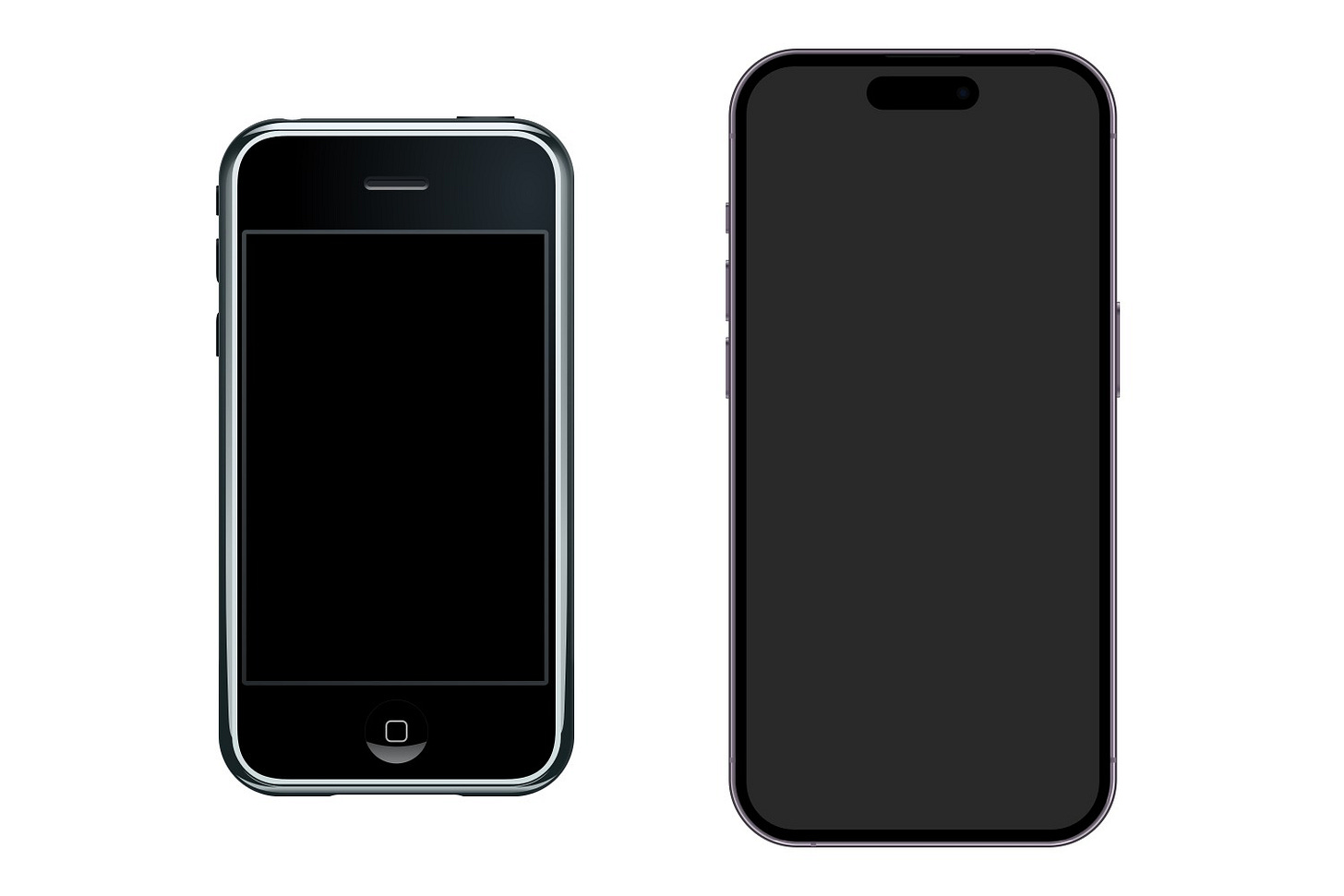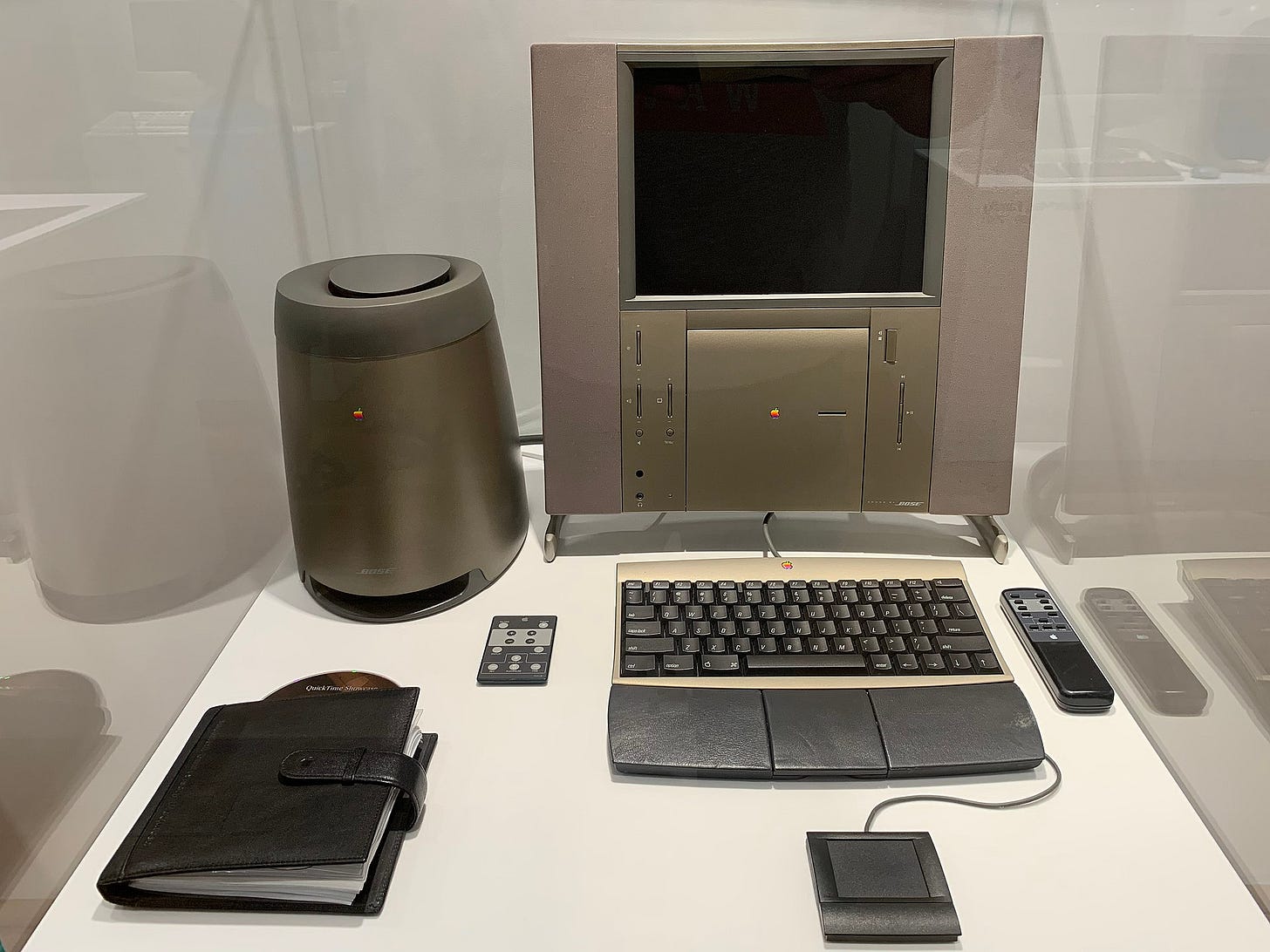This headline at CNBC yesterday…
…is basically the Apple economy in a nutshell: A few times a year they roll out some new modest redesigns on old products, a refreshment of Apple TV which is somehow still in existence, some inscrutable update to an iPad tier that nobody’s ever heard of, perhaps a liquified retina display on a Macbook or two. The new iPhone models are always the showstoppers, the fanboys just go nuts over them, and to me they always just look like bigger iPhones, clunky and unwieldy and basically just a more cumbersome way to spend more time looking at a screen and less time looking at everything else. Boring and unhealthy.
Younger readers might not know this, but there was a time when Apple just couldn’t stop with the unbelievable hits. These guys knew how to wow you and they were just relentless about it. Every year your Presario and Inspiron buddies would get another new release of ugly, chunky, clunky laptops and hideous beige towers, and you’d have yourself an iMac that looked like a Jolly Rancher, so bright and dazzling that you’d have extremely tactile dreams about eating it. If you were on the go you might have one of the clamshell G3s; it looked like you somehow encased a full primary color in a plastic shell and put a handle on it. The G4 Cube was one of the great flops of the computer world, but it was great to look at and even its detractors had to admit it. If you were a working man and/or Carrie Bradshaw, you might get yourself a Powerbook G3, a sleek and brooding sort of device that looked like it could’ve been a stealth bomber or something.
Those were heady years. The Power Mac G3 was really quite beautiful, even if you only ever saw it at elementary schools; eventually they G4’d it and made it graphite and it was still beautiful. Even the eMac was appealing; it was white and bulky, it looked like the computer equivalent of an octagonal eyeball ripped from some giant’s eye socket, but you respected it nevertheless. At some point in there they released the TAM, and they tried to sell it for $8000 and Steve Jobs despised it so it didn’t last long, but man, the weird imposing sleekness of it—like Kubrick’s Monolith in computer form—makes an impression, even today when it might easily be confused for nothing more than a DMV learner’s permit testing station.
And these were good consumer devices, too; they were as functional as they were beautiful. Even before Apple started getting stylish, the System Software was a superlative piece of technology, easy and clean and pleasant to use, and each iteration of it worked very well all the way through to OS X. The Pismo G3 might not have been a whole heck of a lot to admire, at least compared to everything else at the time, but OS 9 was a workhorse, the end result of about 12 years of careful refinement, and you never had to worry about the incomprehensible pathways and crushing viruses that your buddies had to deal with on whatever crummy version of Windows they were running. I always loved to look on the back of hybrid CD-ROM cases and compare the installation instructions between the two operating systems—Windows a lengthly plod from start menu to command prompt to .exe or whatever, Apple just “Double-click on the installer.” It was very funny.
The company’s present-day stagnation can be traced pretty directly to its release of the iPod in late 2001—that is where Apple began its rebranding as a luxury developer of profoundly antisocial handheld consumer devices—but it is still possible to appreciate just how revolutionary and astonishing the iPod really was, with its deeply satisfying clickwheel and its Apple-classic easy interface and its aura of Bay Area chic and technological mystique. If someone had an iPod, that person was notable; you wanted to talk to him, get an idea of who he was and what he was doing with this thing. It was really the last great era wherein a consumer product could provide, in the words of the Swedish socialist Thorstein Veblen, the “means of reputability to the gentleman of leisure.” Apple was there for it; Apple was it. Nobody had done anything like it before, which is what Apple used to be known for: Doing it as nobody had done it before, and doing it so well that everyone else looked like an idiot for not thinking of it sooner.
It’s not to say that Apple is no longer a good company; only that it is a profoundly static one, self-relegating itself to the most incremental and inconspicuous advancements for the same old products year after year. Their flagship iMac line has essentially been unchanged for 15 years, as have their laptops and their various and sundry desktop platforms; all have essentially been frozen as sleek aluminum centerpieces, getting a little faster and more powerful each year but not in a way that matters to most people. They have ceased trying to dazzle anyone, and that is a shame, because the dazzling was really worth something. Their biggest computer news every year is that they’ve built a new screen size for a Macbook Air, and I’m not totally convinced that they’re not just alternately shrinking and enlarging it year after year and hoping nobody notices.
It is no small coincidence that the iPhone made its debut 15 years ago, at precisely the time when Apple’s computer lines kind of slid to a halt. All of the techno-aesthetic know-how that Apple used to apply to its barn-burning desktops and laptops seems to have been redirected into its line of “mobile devices.” But even those are, arguably, kind of effectively unchanged from when they first appeared. Bring a time traveler forward from 2007 and show him an iPhone 14 and he’d be impressed by how big the screen has gotten…and that’d pretty much be it, right? “Oh, it’s bigger, cool. What else is new about it? Oh…nothing much? Oh.”

Apple still makes the best computers and the best operating systems and, if you’re into that sort of thing, the best smartphones. If that’s all they ever keep on doing then they’ll still be the best, and that’s nothing to sneeze at. But they used to be more—they used to be so much more, really, that for a long stretch of years, even arguably as early as 1984, you never knew what they were going to be, only that they were going to blow your horns off with whatever they cooked up in Cupertino. That hasn’t happened for quite some time. It would be wonderful to see it happen again, and it is sweetly sad, now, to reflect on what used to be.






It's almost as if you shackle yourself to one company for all your computing needs, you're going to have to beg for what they deign to give you instead of making a system that suits you.
Innovation in the smartphone space has been greatest outside of the apple ecosystem for years now. Folding screens, dual e-ink screens, the best battery, the fastest hardware, the best cameras, waterproofing (done by Sony in 2013), etc, is all done in the android space where your apps can translate from a device designed to be as small as possible, to a rugged hunting-oriented phone with an IR camera in it.
Apple is stagnating. Which is why you don't buy into hardware-locked ecosystems. Can you translate your apps to the wealth of other phones out there? No. You have to keep pretending to enjoy the crap that apple shovels into your lap. Along with the arbitrary restrictions in freedom to use your device in your own way (like access to the filesystem). Think about it - is this one company going to make the best monitors, hardware and software. You might as well support central planning dictator who knows farming, forestry and finance better than the combined expertise of the free market. Apple is a shiny cage.